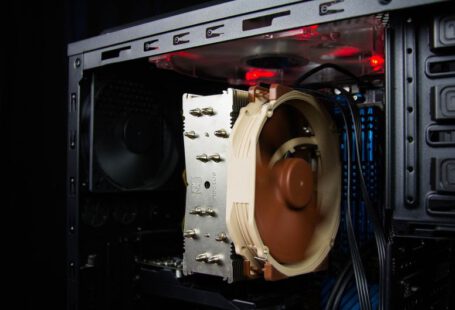It can be frustrating when your budget PC won’t start up as expected. Before you panic and rush to the nearest repair shop, there are several troubleshooting steps you can take to identify and potentially resolve the issue on your own. In this guide, we will walk you through some common problems that can prevent your budget PC from starting and provide you with practical solutions to get it up and running again.
Identifying Power Supply Issues
One of the most common reasons why a budget PC may fail to start is due to power supply problems. If you press the power button and nothing happens, the first thing to check is whether the power supply is properly connected to the wall outlet and your PC. Ensure that the power cord is securely plugged in and that the switch on the power supply unit is turned on. If the power supply unit has a built-in fan, check if it is spinning when you try to power on the PC. If the fan is not running, it could indicate a faulty power supply that needs to be replaced.
Troubleshooting Hardware Connections
If the power supply seems to be working fine, the next step is to check the internal hardware connections of your budget PC. Open up the case and inspect the motherboard, CPU, RAM, and other components to ensure they are properly seated. Loose connections can prevent the PC from starting up, so gently push down on each component to make sure they are firmly in place. Additionally, check the cables connecting the components to the motherboard to ensure they are securely attached.
Testing the RAM
Faulty RAM can also be a culprit behind a budget PC that won’t start. If you have more than one RAM stick installed, try booting up the PC with each stick individually to see if one of them is causing the issue. Remove all but one RAM stick and attempt to start the PC. If it boots up successfully, shut down the PC and repeat the process with each remaining RAM stick. This will help you identify if a specific RAM module is causing the problem.
Checking for Overheating
Overheating can also prevent your budget PC from starting up. If the PC powers on but shuts down shortly after, it could be due to overheating issues. Check the CPU and GPU temperatures in the BIOS or using software monitoring tools. Ensure that the fans are working properly and that the heat sinks are free of dust and debris. If the temperatures are too high, consider reapplying thermal paste or upgrading the cooling system to prevent overheating.
Updating BIOS and Drivers
Outdated BIOS or drivers can also cause startup issues with your budget PC. Check the manufacturer’s website for any BIOS updates for your motherboard and install them according to the instructions provided. Additionally, ensure that your drivers, especially for the graphics card and chipset, are up to date. Updating the BIOS and drivers can often resolve compatibility issues and improve system stability.
Recovering from a Failed Boot
If your budget PC attempts to start but fails to boot into the operating system, you can try booting into safe mode or using system recovery options. Restart the PC and repeatedly press the designated key (usually F8 or F12) to access the boot menu. From there, you can choose to boot into safe mode or use system recovery tools to troubleshoot and repair any software-related issues that may be preventing the PC from starting up successfully.
In Conclusion
Troubleshooting a budget PC that won’t start can be a daunting task, but by following the steps outlined in this guide, you can identify and resolve the issue without the need for professional help. Whether it’s a power supply problem, faulty hardware connection, overheating issue, or outdated drivers causing the startup problem, taking a systematic approach to troubleshooting can help you get your budget PC back up and running in no time. Remember to approach each step methodically and patiently to ensure a successful resolution to the problem.





